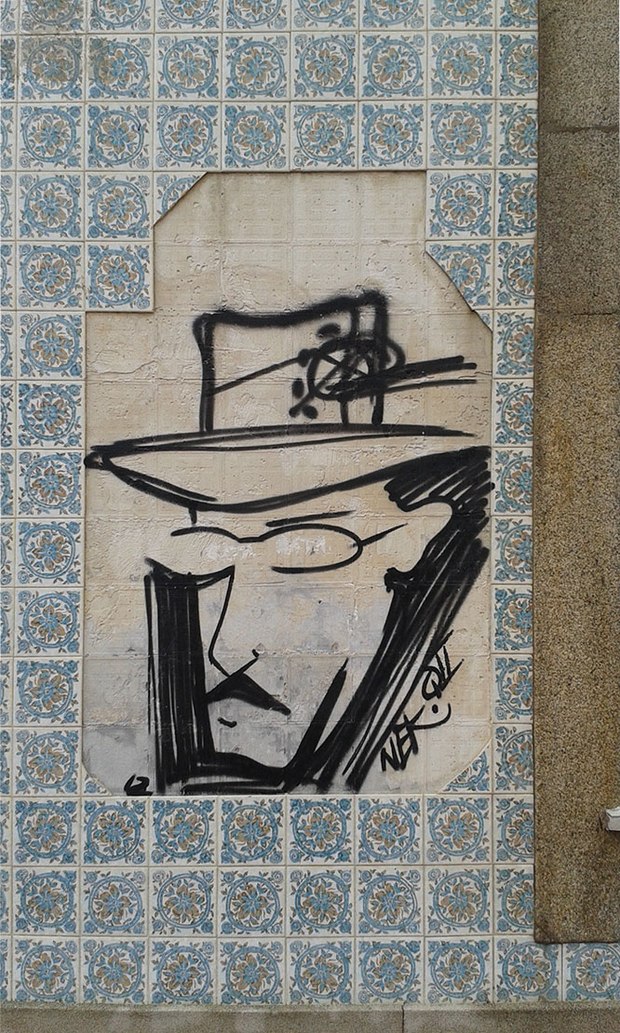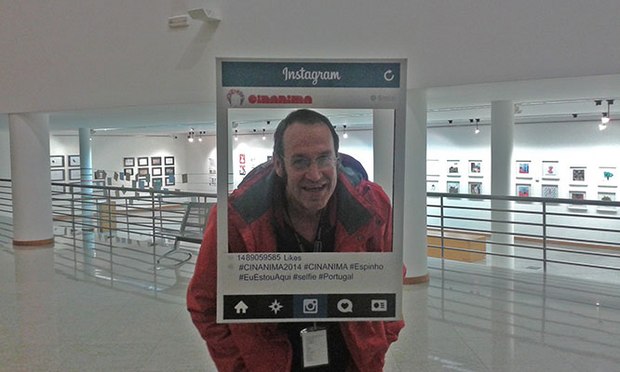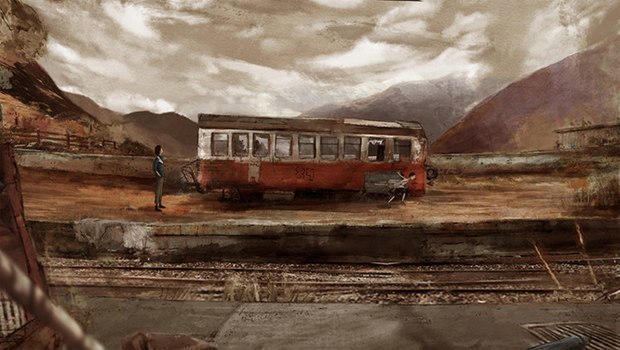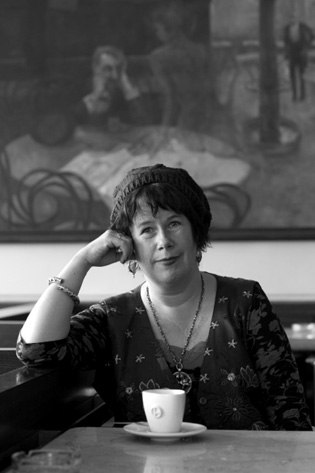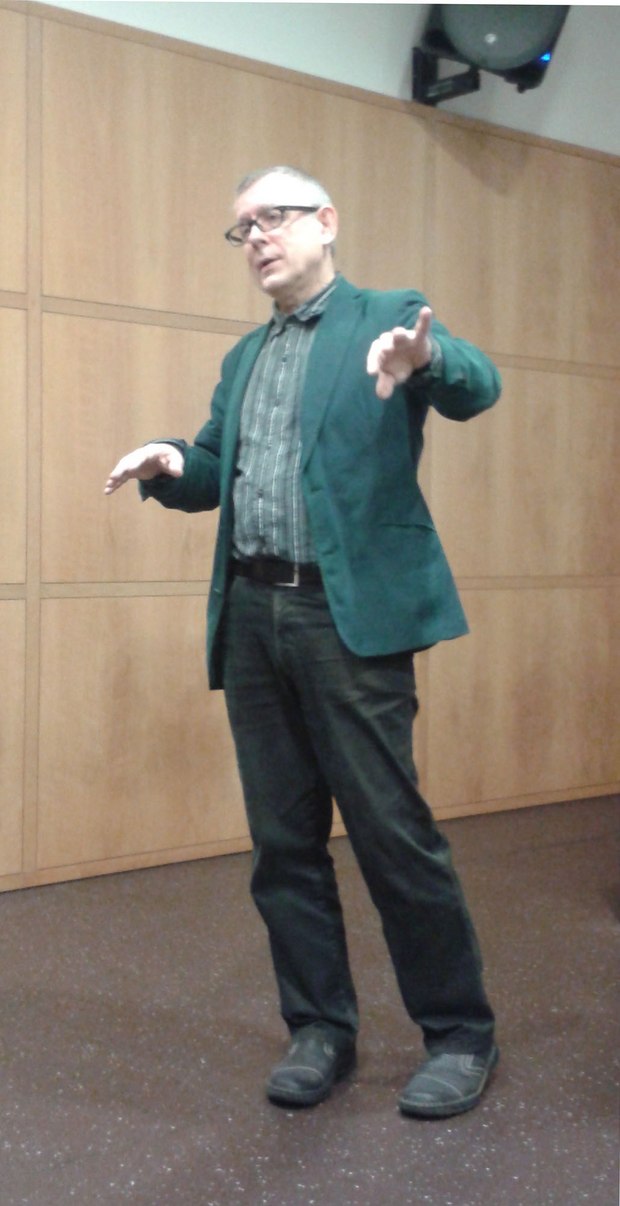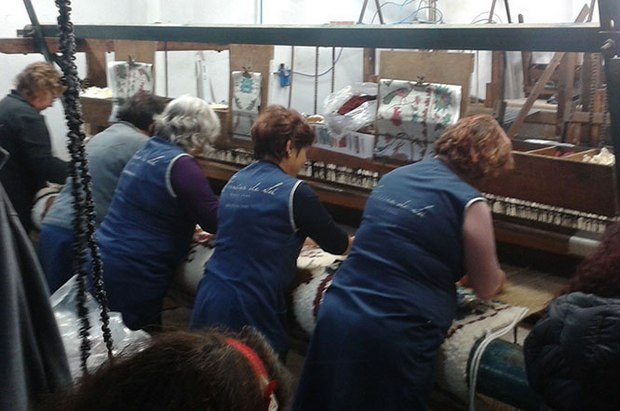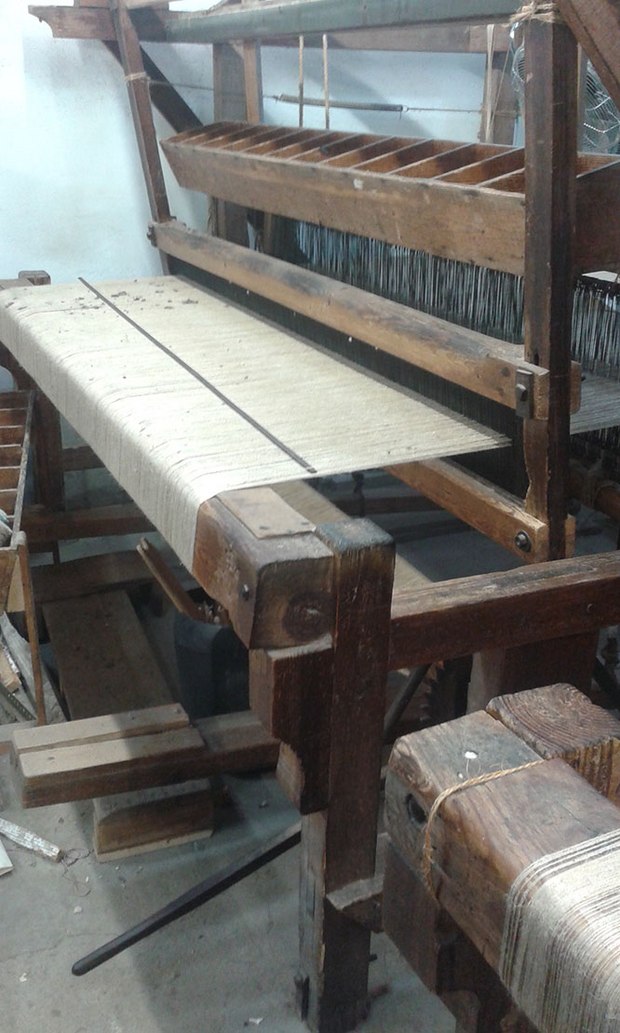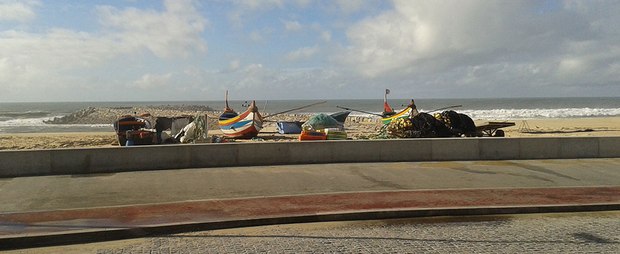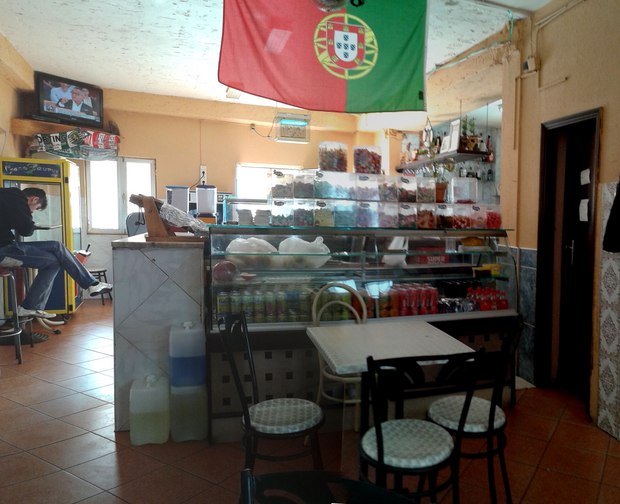The 38th International Animated Film Festival Cinanima, 10 through 16 November, 2014 in Espinho, Portugal is one of the oldest and most respected animation festivals in the world. It has the reputation for screening not only the best of current animation, but is also a major showcase for Portuguese animation. The Grand Prix winning film at the festival qualifies for submission to the Academy Awards and the Cartoon D’ Or. Portugal has a rich literary history and a centuries old connection to the sea, and that is often reflected in their animation. When coupled with the country’s long years of isolation from the rest of Europe, I feel it often makes Portuguese animation difficult for other cultures to appreciate. With the exception of a few well-known Portuguese animators such as Regina Pessoa, Abe Feijo, Jose Miguel Ribeiro, and Joanna Toste, comparatively little animation from this country has been seen at other festivals in the past. There are numerous excellent animators such as Zepe (Jose Pedro Cavalheiro) whose films are well-known in his own country but seldom seen in the rest of the world.
Cinanima is one of the oldest and most respected animation festivals in the world. It has the reputation for screening not only the best of current animation, but is also a major showcase for Portuguese animation. The Grand Prix winning film at the festival qualifies for submission to the Academy Awards and the Cartoon D’ Or.
Portugal has a rich literary history and a centuries old connection to the sea, and that is often reflected in their animation. When coupled with the country’s long years of isolation from the rest of Europe, I feel it often makes Portuguese animation difficult for other cultures to appreciate.
With the exception of a few well-known Portuguese animators such as Regina Pessoa, Abe Feijo, Jose Miguel Ribeiro, and Joanna Toste, comparatively little animation from this country has been seen at other festivals in the past. There are numerous excellent animators such as Zepe (Jose Pedro Cavalheiro) whose films are well-known in his own country but seldom seen in the rest of the world.
This year there was a special reason for Portugal to celebrate. For the first time in Cinanima’s history the Grand Prix was awarded to a native duo, David Doutel and Vasco Sa. Their film Soot (Fuligem) also won the Antonio Gaio Award given yearly to the best professional Portuguese animation. The beautifully animated film was inspired by the train routes that were closed in isolated areas of the country and the effect the closures had on the surrounding small communities. The story spans 25 years and is told through the eyes of a brother who returns home after years away to visit an abandoned railroad side car where he and his brother played and dreamed of traveling the world when they were boys. The trip brings back sad memories of happier times and tragic events. I don’t want to reveal too many details about the film because I hope that after the prestigious double win at Cinanima it will be screened at many festivals. Suffice it to say that it is a good story and it is well animated.
Judging from the films in the Young Portuguese Directors categories, the future of the country’s animation looks very bright. Orchis Mirabilis (Wonderful Orchids) won a special mention in the Young Portuguese Directors Under 18 category. The film is a beautiful birds-eye view of wild orchids. Young animators from the Collective in the Municipality of Abrantes went out into the nearby forests to film wild orchids which grow there in abundance. The resulting stop motion footage of the life cycle of some of the regions 70 species of wild orchids is gorgeous. I did not realize that Portugal had so many varieties of wild orchids; the film is not only visually beautiful but I also learned a lot.
Young people of the Anilupa Workshop in Oporto won the top award in the under 18 caegory for O Duque da Riberia (The Duke of Riberia). The group used paper cut-outs to tell the tale of the legendary Duke who rescued many people from drowning in the dangerous Douro River. The Duke is so revered in his native town that a statue of him stands outside of his birth place in Riberia to pay homage to his brave deeds.
Foi O Foi (Once Upon A Thread) by Patricia Figueiredo took top honors in the Young Portuguese Directors from 18 to 30 Years of Age category. Her black and white 2D film is a whimsical tale of 3 women who represent the fates, weavers of life who are united by a thread. The three of them direct the actions of the other characters, especially of a woman and her husband.
In 2014 festivals throughout Europe presented programs that acknowledge the beginning of the Great War in 1914-18. Cinanima presented two special programs that paid homage to all of the victims of this catastrophic war that affected so many people. The films included the2010 French short Tres Petits Points (Three Dots 2010) created by a group of Gobelins students as their graduation project. It is the touching story about a seamstress waiting for her husband to return from the war. It won a special jury award at Annecy in 2011. At the other end of the spectrum La Détente is about a French soldier in a trench who becomes paralyzed with fear. His mind disconnects from reality as he escapes deeper into a world where war is fought by toys.
Brittany has a very rich tradition of cinema dating back to the 1890’s but the first animation out of Brittany wasn’t made until the 1980’s. Cinanima presented a retrospective of animation from Brittany. It was the first time an international festival has hon ored films from this region of France with a complete program.
Although I have not been able to attend the Fredrikstad, Norway festival for the past few years I had a chance to catch up on the best films from this festival in an Animation from Norway program. The festival always presents the best of Nordic/Baltic animation and it is also one of the nine European festivals whose Grand Prix winner automatically qualifies for the prestigious Cartoon D’Or award. The excellent screen featured such Nordic classics as Torill Kove’s The Danish Port and Anita Killi’s moving Angry Man. It also included such new films as the 2014 A Void which animator Joseph Hodgson based on the Charles Bukowski quote “As the spirit wanes the form appears . . .” The program was curated by festival director Anders Narverud Moen and it was so nice to get to see him again at the festival.
I don’t get an opportunity to see Icelandic animation very often so the program of short films from that island country was of great interest to me. Iceland doesn’t have a long history of animation production, and the first films were made in the last quarter of the 20th century using traditional cell animation. In 2002 The Lost Little Caterpillar, their first CG film, premiered in Iceland. In 2004 the first program of Lazy Town began its run on Nickelodeon. The mixture of live action and puppet animation went on to be aired in over 100 countries worldwide` and was the first really successful Icelandic animated series. The 5 films in this special program were interesting because of where they came from, but I’m sorry to say that they were not very memorable.
I had never seen the 2014 Brazilian feature The Adventures of the Red Airplane (2014) before. It was directed by Frederico Pinto and Jose Maia, and is based on a book by Erico Verissimo. Fernando is an 8 year old boy who has recently lost his mother and is a lonely, friendless child. Even his relationship with his father is not good. Not knowing how to deal with the situation his father tries to win him over with gifts but nothing works until he gives his son a book that he loved when he was a child. Fernando loves the book, The Adventures of the Red Airplane, which takes him into a fantasy world where he discovers the importance of having friends, the joys of reading and most important of all he rediscovers the love of his father. The 2D/3D drawn film tells a very good story that everyone can relate to.
Along with The Adventures of the Red Airplane which is a visually lovely film for the entire family there were special programs designed for children of all ages from pre-school to more complex films for elementary and secondary age young people.
The very impressive international jury included acclaimed Finnish animator Katarina Lillqvist, French animator Bruno Collet, Belgian director/producer Oliver Vandersleyen, delightful Estonian master animator Rao Heidmets, and Alfanso Cruz, Portuguese filmmaker and author. Members of the jury presented retrospectives of their work and master classes in between watching films and deliberating.
Katarina makes puppet animations that deal with strong political and cultural issues. Her films have ranged from the fates of the children of Sarajevo and the position of the Roma minority in the changing face of Europe to the vanishing of the traditional cultures and communities of small Northern tribes and the position of girls and women in authoritative subcultures.
Her 2008 film Far Away From Ural, about the 1918 Finnish Civil War when many citizens were slaughtered without a trial was very controversial in Finland. The film, which hints that the icon of Finnish history Marshall C. G. Mannerheim was bisexual, received very strong reactions which showed that the wounds of the civil war are still very raw. When it was shown on Finnish television, Katarina received death threats. She is currently working on a feature length puppet film based on Mihail Bulgakov’s book The Master and Margarita.
It was especially nice to get to spend time with my old friend Rao Heidmets. The Estonian animator is one of the most talented film makers I know. His puppet animations combine a wry sense of humor with sophisticated political and social satire. Rao has tackled such diverse topics as the totalitarian society in his 1988 film The Pope Carlo Theatre to the 2012 film The Egg about extra-terrestrial life His films are always humorously entertaining and very thought provoking.
French film maker Bruno Collet’s films always bring a smile to my face. He uses everything from Russian nesting dolls, plastic toys, and paper cut outs to a Jackie Chan action figure in his films. Whether Collet is reincarnating a toy Chan with the most annoying voice box imaginable, who has been trapped in a box for 35 years in The Little Dragon or a puppet Robert Mitchum, complete with “love and hate” on his knuckles, who relives his memorable film roles, Bruno’s films are always quirky and entertaining.
Cinanima not only excels in excellent programs, the festival’s hospitality is very warm and welcoming and Espinho is a perfect setting for a festival. The city is located on the ocean with a beautiful beach, has a large weekly open air market which is brimming with countless local specialities such as the local honey, and there are small, reasonably priced restaurants which feature fresh fish dishes.
The festival gave Nik and I a lovely apartment in a hotel on the beach with a balcony with an ocean view. The festival arranges an excursion for the guests each year and this year they took us to the world renowned Ferreira de Sa rug factory where the company creates their one-of-a-kind carpets and tapestries. This Portuguese family business originated in a village that has a tradition of hand woven tapestries and now creates high end custom rugs and tapestries for homes, businesses, and hotels throughout the world.
I have never given a great deal of thought to the wide range of different techniques used to create rugs and tapestries and on our tour we learned the difference between hand-knotted rugs and those created on the massive looms, many of which are antique, as we watched the skilled Ferreira de Sa weavers work. The hand-tufted rugs where the yarn is pushed through a backing to create a tuft require the highest level of craftsmanship and accuracy to create. After watching the skilled artisans at the factory work I have a new respect for the centuries old art of creating rugs and tapestries. At a time when festivals are having their government support drastically cut, financial backing from private companies is even more critical than ever and happily this year Ferreira de Sa became a major sponsor of Cinanima.
Even the November rain didn’t dampen our spirits when Nik and I walked down the beach to the edge of town where the sardine boats come in every day. If you time it right you can bring a bag or bucket and buy freshly caught sardines right from the boats.
There is a small fisherman’s bar there which we visit every time we come to Espinho and even though we had not been there for a couple of years we received a warm welcome from the owners. The bar serves only ham sandwiches and is a not really a restaurant, but just when we arrived the family was just sitting down to their noon day meal and they insisted that we join them. It felt as if we had just seem them the week before as we sat there enjoying the delicious home cooked meal of rice, beans and cod fish washed down with local wine. When we finally left after eating our fill and enjoying a couple of carafes of wine afterwards, they just wouldn’t let us pay for the meal. This generosity, which we find throughout the country, is one of the reasons that we love to visit Portugal. The 50 cent a glass wine, delicious food, and the Pastel de Nate pastries (Nik’s particular favourite) are just three more of our favorite things in this beautiful country.
Two years after the founding of Cinanima, Antonia Gaio became the director of the festival, and for over 35 years he has remained a strong guiding presence. He has been an inspiration and supporter for several generations of young Portuguese animators and when he welcomes you to the festival you know he really means it.
A special thank you goes to Cristina Lima and her hardworking staff who keep everything running smoothly. Cristina is a master at creating a genuinely warm and welcoming atmosphere for every guest at the festival. Unlike so many cities which host festivals the local residents of Espinho are very proud of their festival and everywhere that you walk you see posters for the festival in the shop windows.
Cinanima is always a rich and rewarding experience and I look forward to my next trip to the festival. You can find the list of award winners and learn more about the festival on their website at http://cinanima.pt/


